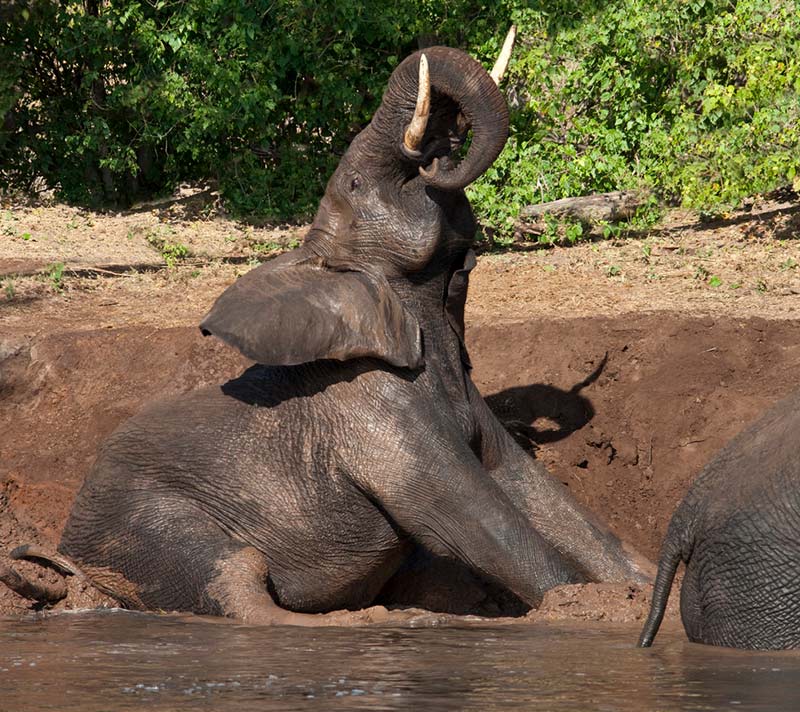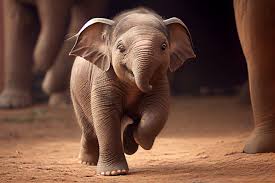Elephants are among the most captivating creatures on Earth, renowned for their immense size, remarkable intelligence, and profound emotional depth. These gentle giants roam the diverse landscapes of Africa and Asia, playing a crucial role in maintaining the ecological balance of their habitats. From their intricate social structures and sophisticated communication methods to their unique physical adaptations, elephants continue to fascinate scientists and wildlife enthusiasts alike. In this article, we delve into 10 intriguing facts about elephants, shedding light on the wonders of these majestic animals and the importance of their conservation.

some of the facts about ELEPHANTS are:-
1. There are two types of elephants found in the world
The Asian Elephant (Elephas maximus) and the African Elephant (Loxodonta africana) are the two species of elephants currently found on Earth. While African elephants are located in the Sahel region, sub-Saharan Africa, and tropical forests in Central and West Africa, Asian elephants may be found in tropical forests in Nepal, India, and Southeast Asia.
These elephant species may be distinguished by their size and ears. Asian elephants have smaller, less prominent ears than their African counterparts.
2. Elephants are the largest living land animal
African elephants may grow 8 to 13 feet tall at the shoulders and weigh between 5,000 and 14,000 pounds. Asian elephants are smaller than their African counterparts, standing 7 to 10 feet tall at the shoulders and weighing an average of 4,500 to 11,000 pounds.
3. Elephants can’t jump
Elephants can’t leap, despite what you may think from the adorable images in movies and TV shows. Elephants cannot jump, which may not come as much of a surprise given their enormous stature, but there are other causes beyond their obvious size. The majority of jumping animals do it out of need, whether it’s to scavenge for food or flee from predators. Fortunately, most would-be predators are intimidated by our elephant friends’ great size, and food is readily available to them.
Elephants’ bone structure is another reason why they cannot leap. The bones of an elephant’s legs are not just directed downward, as opposed to our bones, which eliminates the crucial “spring” needed to jump into the air.

4. Elephants spend 16 hours per day eating
Elephants only consume plants since they are herbivores. It may not surprise you that they spend most of their day eating because they are one of the largest creatures in the world. They must consume a lot of plants to stay full since it takes a lot of fuel to power such a massive and strong beast. If you were to eat a bowl of basic greens for dinner, it would need to be enormous to fill you up. Now imagine that you are an elephant’s size!
Foods including bamboo, flowers, fruits, grasses, leaves, twigs, seeds, and herbs are some of an elephant’s favorites. You can use this chance to find out the child’s favorite meals.
5. Elephants travel in a herd
Similar to how they are for humans like us, elephants value close connections and family ties. Female elephants roam in herds, which can have 8 to 100 elephants. The eldest elephant in a herd is the leader; other elephants in the herd come from the same family.
Between the ages of 12 and 15, male elephants leave the herd and either live alone or with other male elephants.

6. Elephants can communicate with each other over far distances
Elephants use a range of noises to talk to one another. Crying, yelling, snorting, and even rumbling are among these noises. Elephants have exceptional hearing, which enables them to converse and hear one another up to five kilometers away. That kind of hearing might be helpful when you’re away from your buddies!
They achieve this by listening to ground vibrations at an audible volume only to elephants utilizing the sensitive nerves in their feet. It seems logical given their size for them to be able to produce such powerful sounds that can shake the earth, but it’s still amazing to consider! They sound like a live subwoofer; fortunately, they aren’t your neighbors!
7. Elephants can live to be 70 years old
Elephants have been reported to live up to 70 years old when given enough food, water, and little stress in their natural habitat. This is quite close to the average lifespan for humans.
There are elements that, like in humans and other animals, lead to a shortened lifetime. Lack of sufficient supplies of food or water, disease, and unlawful killing are a few reasons that influence elephants. Although their ability to repel the majority of predators helps, unlawful poaching has had a devastating effect on the number of elephants in the wild.

8. Elephants can use their trunks to breathe underwater
You might be surprised to find that elephants are excellent swimmers by nature. They can swim for great distances and can easily float because of their big size and usage of their trunk.
Elephants utilize their trunks for a variety of purposes, including eating, picking up items, and drinking water. They can even breathe underwater while swimming by using their trunk as a snorkel. Elephants are known to like the water and will spend countless hours swimming to cool off and explore new lands.
9. One adult elephant consumes 300 – 600 pounds of food per day
You might be surprised to find that elephants are excellent swimmers by nature. They can swim for great distances and can easily float because of their big size and usage of their trunk.
Elephants utilize their trunks for a variety of purposes, including eating, picking up items, and drinking water. They can even breathe underwater while swimming by using their trunk as a snorkel. Elephants are known to like the water and will spend countless hours swimming to cool off and explore new lands.
10. Along with their large food consumption, elephants drink 30-50 gallons of water per day
An elephant needs water to be hydrated, stay cool, take baths, and even for playtime. Understandably, a huge animal like an elephant can drink so much water because water is essential for healthy digestion.
To put 50 gallons of water into perspective, imagine drinking 12 and a half large milk jugs, or practically a bathtub full.

INTERESTING FACTS ABOUT BABY ELEPHANTS
Elephants convey their infants for a considerable length of time, and seriously surprising creature pregnancies
elephants are pregnant for a normal of 22 months, while for Asian elephants it’s 18 to 22 months

Long pregnancy is a direct result of what enormous animals they are – yet you’d just be halfway right. Child elephants truly do foster gradually in the belly as a result of their actual size

Elephant babies are called calves
baby elephant can remain in no less than 20 minutes of being conceived and stroll soon. They are for the most part around three feet (one meter) tall and gauge 198 to 265 pounds (90 to 120 kilograms). Infant male African elephants might weigh up to 165 kg (364 lb), while infant Asian elephant calves weigh around 91 kg
differences between Asian and African elephants

1.Asian elephants are more modest than African elephants, gauging between 3,000-6,000 kg, while African elephants weigh between 4,000-7,500 kg
2. The ears of African elephants are bigger than Asian elephants. which have huge fan-molded ears.
3. Both male and female African elephants have tusks, but only Asian male elephants have tusks.
4. Asian elephants have four toenails on each back foot.
5. Asian elephants have adjusted heads, while African elephants have square heads.
6. Asian elephants have adjusted or curved backs, while African elephants have plunged backs..
Asian elephants live in the southern, eastern, and southeastern pieces of Asia. African elephants live in Angola, Botswana, Burundi, Chad, Eritrea, Ethiopia, Kenya, Malawi, Mozambique, Namibia, Rwanda, Somalia, South Africa, Sudan, Swaziland, Tanzania, Zambia, and Zimbabwe
ROSH HASHANAH THE JEWISH NEW YEAR
must read it—- atozfunda.com
VERY INFORMATIVE